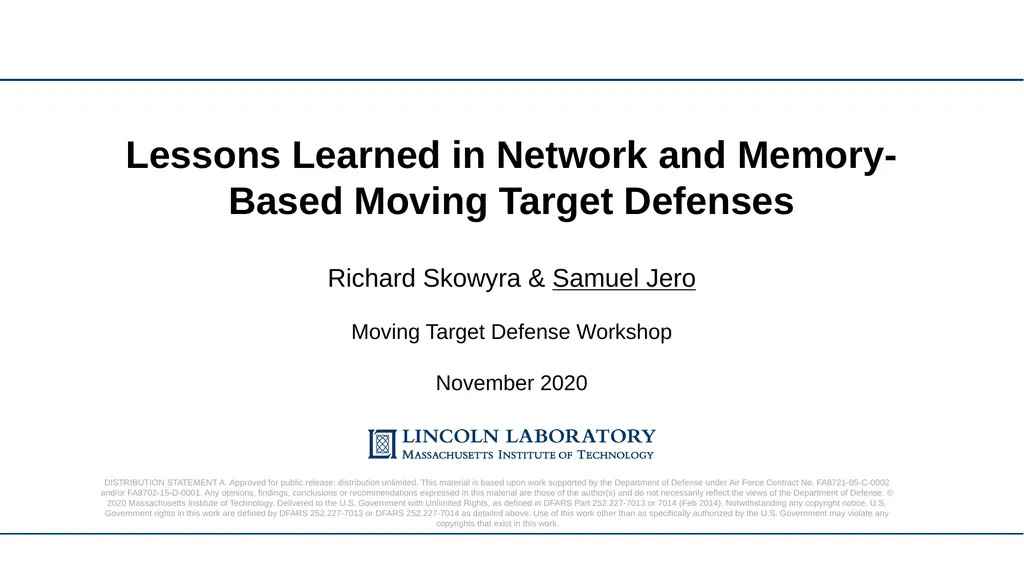
Lessons Learned in Network and Memory-Based Moving
Author: conchita-marotz | Published: 2025-08-13
Description: Lessons Learned in Network and Memory-Based Moving Target Defenses Richard Skowyra Samuel Jero Moving Target Defense Workshop November 2020 DISTRIBUTION STATEMENT A. Approved for public release: distribution unlimited. This material is
Download Presentation
Download the PPT/PDF: Download
Transcript:
Loading transcript…